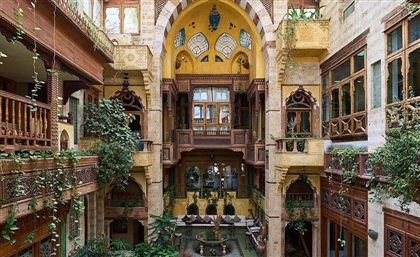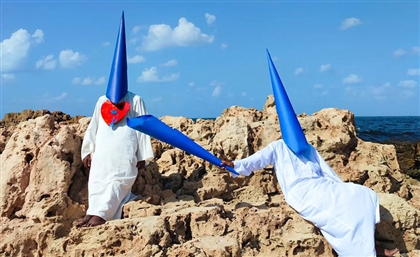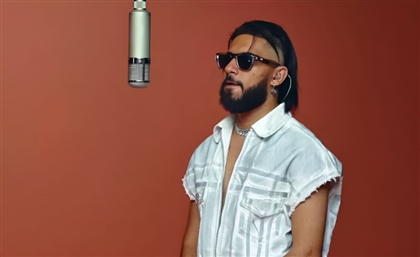Omar Gabr: The Cairene Artist Spotlighting the Soul of Shoubra
Gabr is a 24-year-old Cairene artist whose works range from reflective self-portraits to exuberant scenes of Shoubra life.
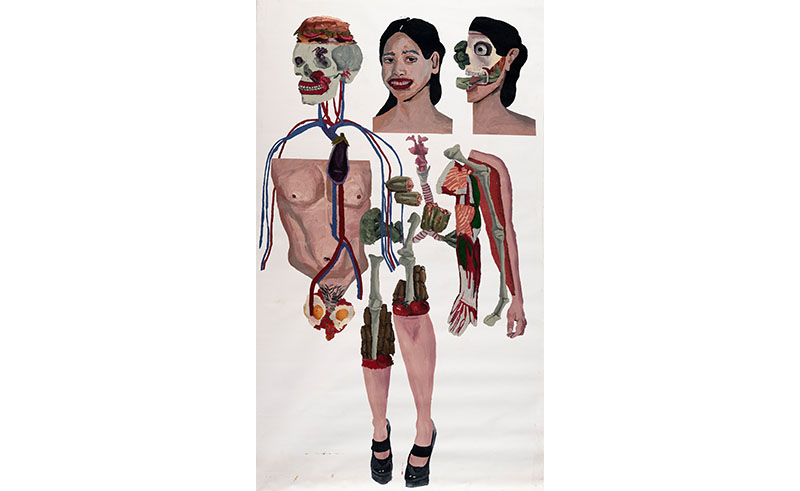
The innocent tunes of boys playing football in old alleyways, and old galabeya-clad men smoking shisha under the shade of trees as they shed their autumn leaves. Young girls playing with brown and black street puppies, with the tooting of tuk-tuks and the glimmer of the ancient Nile in the distance. Here, in an abode of solitude and peace in Shoubra El Kheima, far from the bustle of the vibrant street life below, is the studio of Omar Gabr, a 24-year-old visual artist whose work has been making waves in the Cairene art scene. His work has been featured in exhibitions in London, Milan and Marrakech, as well as multiple shows in Alexandria and Cairo.
Gabr has always been surrounded and influenced by the arts, with many family members and friends having been avid sculptors and creatives. It was when he was hospitalised that he first took his hand to dabbling in the visual arts, however. Confined to his hospital bed for months, Gabr sought to distract his mind from the monotony of his surroundings, so he picked up a pencil and paper and began drawing.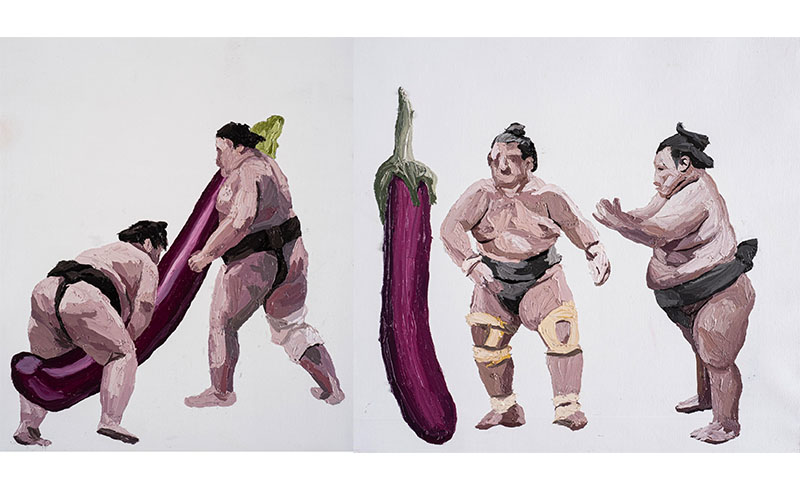 “My first works done in the hospital and immediately after are darker. They portray a younger version of myself. A representation of youthfulness perhaps and the journey to self-understanding which accompanies it,” Gabr tells CairoScene in his tranquil Shubra studio. These formative hospital years are a constant theme in his early works. “As I’ve grown and developed as an artist, my work has become less severe. Not because the world is less severe, but there comes an understanding that life is comedic, and more specifically, black comedy. Now my works are less reactive. Perhaps there is more acceptance of life’s realities, and a peace made with it.”
“My first works done in the hospital and immediately after are darker. They portray a younger version of myself. A representation of youthfulness perhaps and the journey to self-understanding which accompanies it,” Gabr tells CairoScene in his tranquil Shubra studio. These formative hospital years are a constant theme in his early works. “As I’ve grown and developed as an artist, my work has become less severe. Not because the world is less severe, but there comes an understanding that life is comedic, and more specifically, black comedy. Now my works are less reactive. Perhaps there is more acceptance of life’s realities, and a peace made with it.”
When Gabr left the hospital with his newfound passion, he immediately sought to further his abilities in the arts. He joined a group, ‘El La2ta El Waheda’, which would stroll around old Cairo and Moez Street and sketch. Soon after, he exhibited at Salon Shabab, a governmental programme for young talents in the visual arts to showcase their works at the Palace of the Arts in the Opera House Complex. It was around this time that Gabr would become acquainted with Mohamed Khedr, an artist who would become his mentor and guide in the discipline. “One of the most important lessons that Khedr taught me was that there is no need to be inspired by one artist or one artistic form, and that one’s job as a creative is to define the moment and place in which one lives, for oneself,” Gabr shares.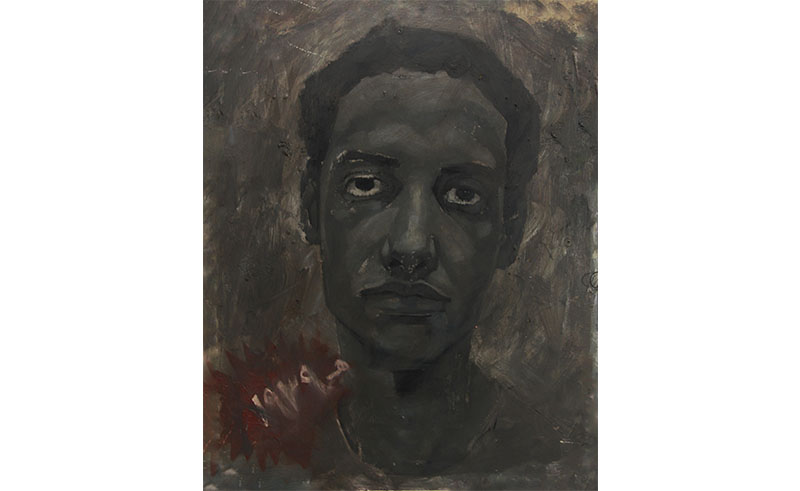 This is explicit in Gabr’s oeuvre, which spans from melancholy and morose self-portraits in dark hues, to reflective and dramatic portrayals of classic Shoubra scenes and exuberantly coloured works. Often jarring, sometimes provocative and always immersive, Gabr’s paintings and drawings encapsulate the surroundings that have created his personal identities and ways of seeing the world.
This is explicit in Gabr’s oeuvre, which spans from melancholy and morose self-portraits in dark hues, to reflective and dramatic portrayals of classic Shoubra scenes and exuberantly coloured works. Often jarring, sometimes provocative and always immersive, Gabr’s paintings and drawings encapsulate the surroundings that have created his personal identities and ways of seeing the world.
“My upcoming exhibition is inspired by Shoubra, but it is not about Shoubra per se,” Gabr says. “It is an expression of the emotions evoked by the place in the world which I occupy.”
Asked if his work is particularly Egyptian or if it seeks to exemplify contemporary Egyptian artistic tastes, Gabr says, “As young Egyptian artists, there is no longer a need to focus on specific Egyptian identities as in the past.” As Egypt is a part of the broader globalised artistic world, Gabr believes that contemporary art in Egypt is no longer particularly needed as an expression of identity. “Of course, one’s work is always influenced by the environment from which one comes from. But now, art transcends borders more than ever before.”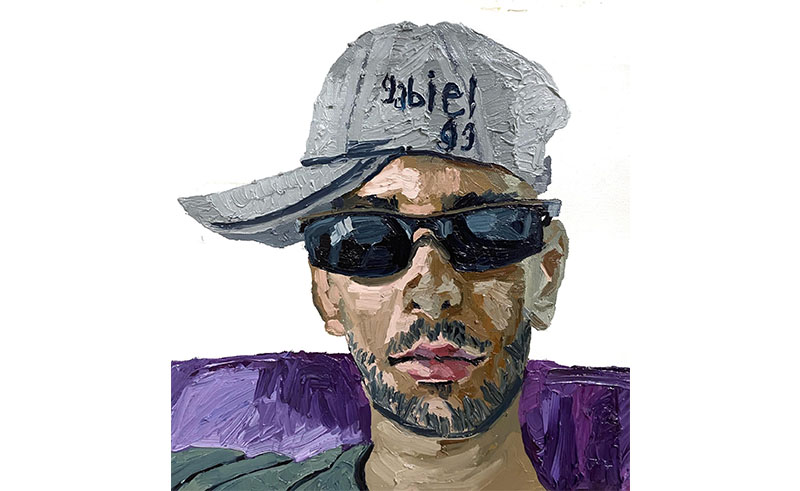 Stylistically, Gabr’s work is often modernist and sometimes absurdist, the latter influences illustrating the artist’s efforts to make sense of the world around him. “The artist wants to find an artistic raison d’être behind everything that happens in their life.” The provocative messages behind some of his works is gripping, and encourages reflection. Asked if he is sometimes an intentional provocateur, Gabr responds, “I don’t intentionally try to be controversial. What audiences find controversial is a product of us living in a world which is asleep, and the artist’s job is to hurt, and to shock, and to wake people from their slumber.”
Stylistically, Gabr’s work is often modernist and sometimes absurdist, the latter influences illustrating the artist’s efforts to make sense of the world around him. “The artist wants to find an artistic raison d’être behind everything that happens in their life.” The provocative messages behind some of his works is gripping, and encourages reflection. Asked if he is sometimes an intentional provocateur, Gabr responds, “I don’t intentionally try to be controversial. What audiences find controversial is a product of us living in a world which is asleep, and the artist’s job is to hurt, and to shock, and to wake people from their slumber.”
Amongst his more controversial works was a series of paintings portraying Sumo wrestlers grappling with aubergines. “These paintings were highly misconstrued,” Gabr says. “The symbol of the Sumo wrestler represents man, and the versatility and duality of man. The Sumo wrestler is traditionally overweight, but yet, they are also simultaneously healthy athletes.” The series was judged as having sexual undertones. “The symbol of the aubergine in these works represents human cravings. The Sumo wrestler represents man grappling with his human cravings, symbolised by the aubergine. But critics today find it fashionable and trendy to sexualise artwork.”
After the critique of this series, Gabr decided to remove the aubergine and replaced it with a turnip. “The message behind the turnip and Sumo wrestler paintings became both an accentuation of the initial series’ commentary on human cravings, but also comments on the trend within the art world to sexualise everything. A turnip is an asexual symbol, and yet the Sumo wrestlers grappling with it conveys the same message as the initial series had when the wrestlers were grappling with aubergines.”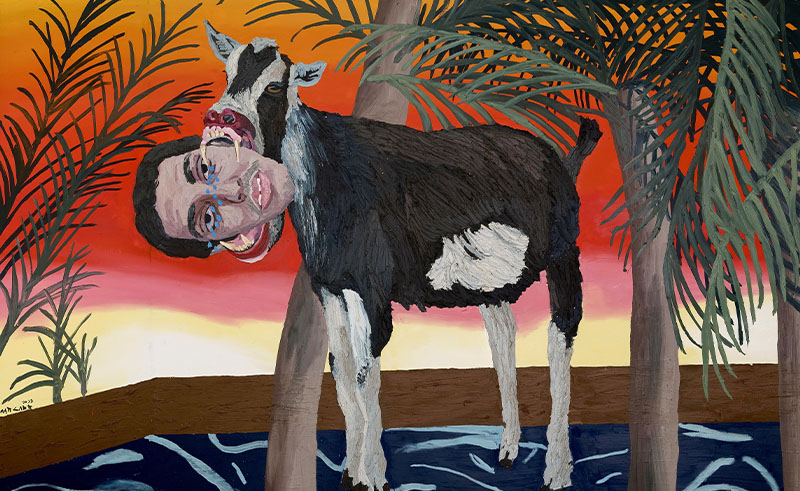 As the studio’s vast windows gave rise to the calming luminescence of the Cairene dusk, Gabr showed us around his artistic haven, and gave us first glimpses at his pieces that will soon be shown at upcoming exhibitions. He has begun working with tapestries in the traditional Egyptian khayameya form, as well as working with phosphorus in his creations.
As the studio’s vast windows gave rise to the calming luminescence of the Cairene dusk, Gabr showed us around his artistic haven, and gave us first glimpses at his pieces that will soon be shown at upcoming exhibitions. He has begun working with tapestries in the traditional Egyptian khayameya form, as well as working with phosphorus in his creations.
Some of Gabr’s works will be exhibited in London this October at the 1-54 Contemporary African Art Fair. A full exhibition of his new works will be exhibited in February 2024 at Zamalek’s Ubuntu Art Gallery, featuring Gabr’s works with new mediums. “The new exhibition is a product of the questioning of identity and roots,” he shares.
As we leave his studio, Gabr’s soft smile and glinting eyes precede an invitation to return and relax in the peace of his studio. “It is a beautiful place for solitude and for creation,” he says. “But it is also a beautiful space for joy and to spend time with friends.”
Related Articles
Trending This Week
SceneNow TV
Events Calendar





